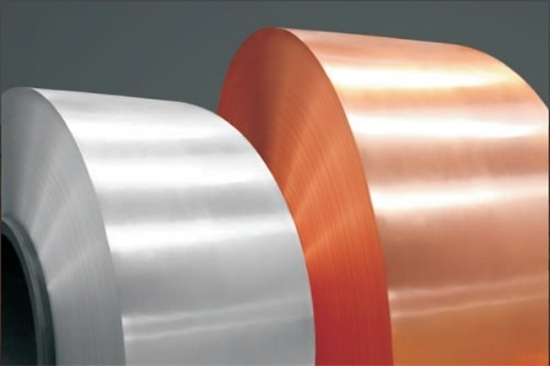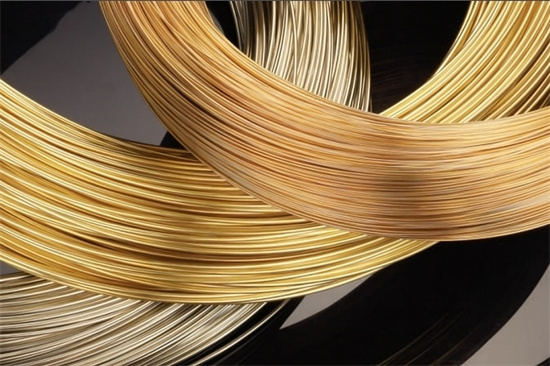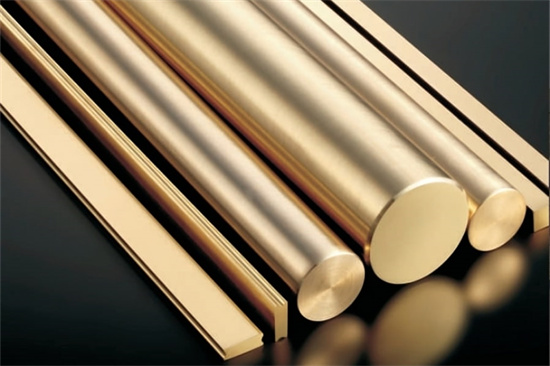


Phosphor Bronze: The Ultimate Alloy for Long-Lasting Applications
Low MOQ
Provide low minimum order quantity to meet different needs.
OEM & ODM
Provide customized products and design services to meet unique customer needs.
Adequate Stock
Ensure fast order processing and provide reliable and efficient service.
Customer Satisfaction
Provide high quality products with customer satisfaction at the core.
share this article
Table of Contents
When it comes to choosing materials for high-performance applications, one alloy consistently stands out: phosphor bronze. Known for its strength, resistance to wear, and excellent corrosion resistance, phosphor bronze is a versatile material used across many industries, from marine engineering to electrical components. But what exactly makes this alloy so special, and why do engineers and manufacturers rely on it so heavily?
In this comprehensive guide, we’ll take a deep dive into phosphor bronze, exploring its composition, mechanical properties, applications, and more. Whether you’re an engineer looking for precise material specs or a manufacturer seeking the best alloy for your next project, this guide will provide all the insights you need. Let’s get started.
Overview
Phosphor bronze is a copper alloy that contains phosphorus and tin. This unique combination gives it a range of properties that make it suitable for demanding applications. Tin adds strength and corrosion resistance, while phosphorus improves wear resistance and stiffness.
Key Features :
- High strength and durability
- Excellent corrosion resistance, particularly in marine and industrial environments
- Superior wear resistance, making it ideal for high-friction applications
- Good fatigue resistance, extending the material’s lifespan in dynamic applications
- Non-magnetic and non-sparking, making it suitable for hazardous environments
Phosphor bronze is commonly compared to other copper alloys, such as brass and aluminum bronze, and while it shares certain properties with these materials, it often outperforms them in specific areas like fatigue resistance and wear resistance. For engineers and manufacturers looking for a reliable, long-lasting material, phosphor bronze offers a great balance of performance and cost-effectiveness.
Types and Composition
Phosphor bronze alloys contain varying levels of tin and phosphorus, which can dramatically affect their mechanical properties. Here’s a closer look at the different types of phosphor bronze and their compositions.
| Alloy Type | Copper (Cu) | Tin (Sn) | Phosphorus (P) | Key Characteristics |
|---|---|---|---|---|
| C51000 (5% A) | ~94.75% | 5% | 0.2% | High strength, good corrosion resistance, excellent formability |
| C52100 (8% A) | ~91.75% | 8% | 0.2% | Higher strength and hardness, ideal for springs and electrical contacts |
| C52400 | ~92.75% | 7.5% | 0.2% | Balanced strength and fatigue resistance, often used in fasteners |
| C54400 | ~92% | 4% | 0.03% | Free-cutting phosphor bronze, excellent machinability |
Note: The specific composition can vary slightly depending on the manufacturer and the exact grade.
Phosphor Bronze Properties
The properties of phosphor bronze make it ideal for applications where strength, wear resistance, and corrosion resistance are required. Below are the typical mechanical properties of some common phosphor bronze alloys.
| Property | C51000 | C52100 | C52400 | C54400 |
|---|---|---|---|---|
| Tensile Strength (MPa) | 345-540 | 540-690 | 430-620 | 400-540 |
| Yield Strength (MPa) | 180-460 | 460-620 | 345-540 | 275-460 |
| Elongation at Break (%) | 20-40% | 6-12% | 10-25% | 10-30% |
| Brinell Hardness (HB) | 80-130 | 120-180 | 90-150 | 100-160 |
| Density (g/cm³) | 8.8 | 8.8 | 8.8 | 8.8 |
| Electrical Conductivity | 15-20% IACS | 12-15% IACS | 13-18% IACS | 10-15% IACS |
The combination of properties—particularly the tensile strength, hardness, and resistance to fatigue—makes phosphor bronze alloys some of the most sought-after materials for applications that demand long-term durability.
Phosphor Bronze Applications
Thanks to its strength, corrosion resistance, and wear properties, phosphor bronze finds use in a wide range of industries. Whether it’s being used in springs, gears, or electrical connectors, this alloy delivers reliable performance in demanding conditions.
Common Applications
| Industry | Application |
|---|---|
| Marine | Propeller shafts, bearings, and marine hardware where corrosion resistance is key |
| Electrical | Connectors, switches, and relays due to its conductivity and fatigue resistance |
| Aerospace | Springs, fasteners, and bushings for high-stress environments |
| Automotive | Bearings, gears, and valve components |
| Industrial Machinery | Gears, bushings, and wear plates for high-friction environments |
| Musical Instruments | Strings for pianos and guitars, offering a warm, resonant sound |
| Architecture | Decorative elements, sculptures, and structural components |
Let’s take the marine industry as an example. Phosphor bronze’s corrosion resistance in saltwater environments makes it an excellent choice for bearings, propeller shafts, and other marine components. In electrical engineering, its fatigue resistance and conductivity make it ideal for connectors and switches that need to withstand repeated cycles without failing.
Specifications, Sizes, and Standards
When selecting the right phosphor bronze alloy for your project, it’s essential to understand the available specifications, sizes, and industry standards. Depending on the application, you may require phosphor bronze in a particular form, such as sheets, rods, or wires.
Available Forms and Sizes
| Form | Typical Sizes Available | Industry Standards |
|---|---|---|
| Sheets/Plates | Thickness: 0.5 mm to 100 mm | ASTM B103, EN 1652 |
| Bars/Rods | Diameter: 5 mm to 500 mm | ASTM B139 |
| Wires | Diameter: 0.1 mm to 5 mm | ASTM B159 |
| Tubes | Outer Diameter: 10 mm to 300 mm | ASTM B135 |
| Castings | Custom sizes based on customer requirements | ASTM B806 |
These standards ensure that the material meets the required mechanical and chemical properties for specific industries. For example, if you’re working on an electrical application, ASTM B159 will ensure your phosphor bronze wires meet the necessary specifications for conductivity and durability.
Grades and Standards
Several grades of phosphor bronze are available, each with its specific set of properties and standards. Understanding these grades is essential when selecting the right material for your application.
| Grade | Standard | Primary Use |
|---|---|---|
| C51000 | ASTM B103, B139 | General-purpose use, including springs, electrical connectors |
| C52100 | ASTM B103, B139 | High-strength applications, such as gears, fasteners, and bushings |
| C54400 | ASTM B139, B806 | Free-machining applications, including fasteners and fittings |
Selecting the right grade and standard ensures that your material will perform as expected in your specific application. For instance, C52100 is often chosen for high-strength components like gears and bushings, while C54400 is ideal for free-machining due to its excellent machinability.
Suppliers and Pricing
The price of phosphor bronze can vary significantly depending on the grade, form, and quantity you’re purchasing. Additionally, market conditions such as the price of copper and tin can affect the overall cost.
Leading Suppliers and Pricing Estimates
| Supplier | Location | Price per kg | Minimum Order Quantity |
|---|---|---|---|
| National Bronze Mfg. Co. | USA | $18 – $30 | 50 kg |
| Bronze Alloys Ltd. | UK | $20 – $35 | 100 kg |
| Shanghai Metal Corporation | China | $15 – $28 | 200 kg |
| MetalTek International | Global | $22 – $38 | Custom (depends on project) |
Prices can fluctuate based on the cost of raw materials and the complexity of the alloy. Bulk purchases often result in significant cost savings, so it’s essential to consider your long-term material needs when planning a purchase.
Advantages and Disadvantages
Like any material, phosphor bronze has its advantages and disadvantages. While it excels in many areas, there are a few limitations to consider, especially when compared to other alloys.
Advantages
| Advantage | Description |
|---|---|
| Excellent Wear Resistance | Ideal for high-friction applications like gears and bearings. |
| High Corrosion Resistance | Stands up well to saltwater and industrial chemicals, making it ideal for marine use. |
| Good Fatigue Resistance | Performs well in dynamic applications like springs and electrical connectors. |
| Non-Sparking | Suitable for use in explosive or hazardous environments. |
| Machinability | Certain grades (like C54400) offer excellent machinability for precision parts. |
Disadvantages
| Disadvantage | Description |
|---|---|
| Higher Cost | More expensive than some other copper alloys like brass due to the inclusion of tin and phosphorus. |
| Lower Electrical Conductivity | Not as conductive as pure copper, making it less suitable for high-current applications. |
| Limited Availability | Certain grades and sizes may only be available through specialized suppliers. |
While phosphor bronze offers many benefits, it’s important to weigh these against the cost and availability when considering it for your project. For example, while it’s more expensive than brass, its wear resistance and corrosion resistance can make it cost-effective in the long run, especially in demanding environments.
FAQs
| Question | Answer |
|---|---|
| What is phosphor bronze used for? | It’s used in marine, electrical, and industrial applications due to its strength and corrosion resistance. |
| Is phosphor bronze expensive? | Yes, it’s more expensive than standard copper alloys like brass, but its durability often justifies the cost. |
| Can phosphor bronze be welded? | Yes, but it requires specialized techniques to avoid defects. |
| How does phosphor bronze compare to brass? | Phosphor bronze is stronger, more corrosion-resistant, and has better wear properties than brass. |
| Is phosphor bronze magnetic? | No, it’s non-magnetic, making it suitable for sensitive electronic applications. |
| Is phosphor bronze good for marine use? | Absolutely, its corrosion resistance in saltwater makes it ideal for marine hardware. |
| What’s the difference between C51000 and C52100? | C52100 contains more tin and is stronger, making it better suited for high-stress applications. |
| Does phosphor bronze corrode? | While highly resistant to corrosion, it can still corrode under extreme conditions, like exposure to strong acids. |
Conclusion
Phosphor bronze is a high-performance alloy that offers an excellent balance of strength, corrosion resistance, and wear properties. Whether you’re designing components for marine applications, electrical systems, or high-stress mechanical parts, phosphor bronze delivers the durability and reliability you need.
While it may come at a higher price than other copper alloys, its long-term performance in demanding conditions makes it a cost-effective choice for many industries. By understanding the different grades, applications, and specifications of phosphor bronze, you can make informed decisions that will optimize the performance and longevity of your projects.
So, whether you’re a seasoned engineer, a manufacturer, or a designer looking for the best material for the job, phosphor bronze should be high on your list of potential materials.
Maybe you want to know more about our products, please contact us
Get Latest Price
About Met3DP
Product Category
HOT SALE
CONTACT US
Any questions? Send us message now! We’ll serve your request with a whole team after receiving your message.

Metal Powders for 3D Printing and Additive Manufacturing
COMPANY
PRODUCT
cONTACT INFO
- Qingdao City, Shandong, China
- [email protected]
- [email protected]
- +86 19116340731








